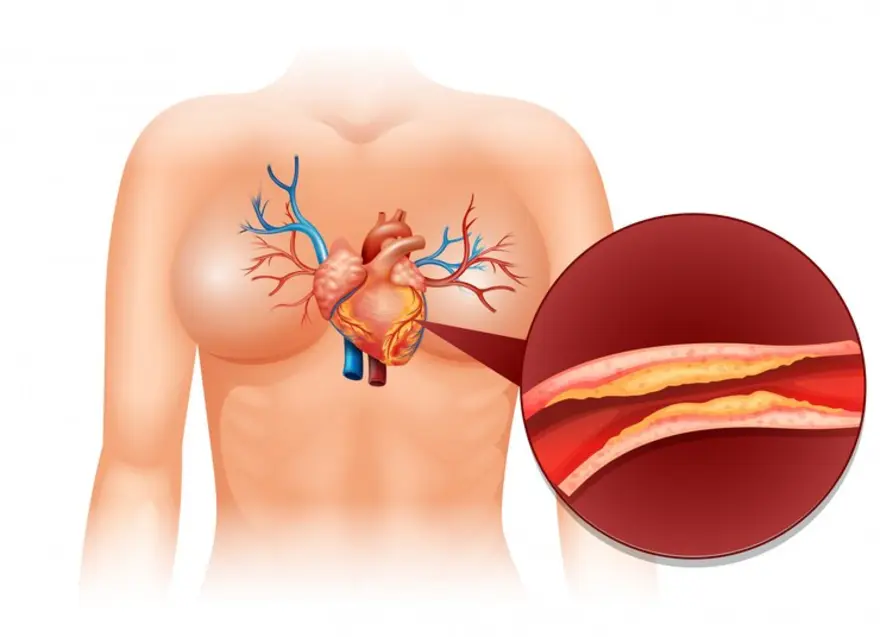Health Test
6 numbers you must know for a Healthy Heart
2518 Views
0

It is easy to measure how much weight you have gained and how faster you can walk a mile. Calculating your heart health may not be that straightforward, but knowing just a few numbers can provide a pretty accurate picture of your current heart health. Tracking these numbers is important as it motivates you to maintain healthy numbers and improve the less healthy ones. The better aware you are of these numbers, the higher your control on your cardiac health will be.
Here are the 6 numbers you must know for a healthy heart
1. Blood Pressure:
The ideal blood pressure range is 120/80 mmHg or less. The upper number is systolic blood pressure, which measures the pressure your heart exerts on artery walls while beating. The lower number is diastolic blood pressure, which measures the force of your blood against the artery walls when your heart is at rest between heartbeats. Blood pressure often, but not always, rises as you age. If it’s too high, it strains the heart and arteries. Over time, high blood pressure or hypertension can cause the heart to enlarge or weaken. It is often called the silent killer, because it usually lacks obvious symptoms but it raises risks of heart attack, stroke, heart failure and kidney disease. It is recommended that you check your blood pressure at least once every two years after the age of 18, and once every year if you are at an increased risk of high BP or age 40 or older.
Want to get an overall picture of your health? Book TruHealth packages. Explore here.
2. Blood Glucose:
While blood glucose levels are an indicator of diabetes, they also help predict your heart health. That’s because people with diabetes are twice as likely to have risk of having a heart attack or stroke.
Your blood sugar level can fluctuate depending on the time of day, when you eat and what you eat. The most commonly used way to take a reading is a fasting blood glucose test. Fasting blood glucose levels less than 100 mg/dL is considered normal. Levels of 100 to 125 mg/dL indicate prediabetes. Anything above 125 mg/dL is considered diabetes. Your doctor may also order a hemoglobin A1c (HbA1c or glycosylated hemoglobin) test. The A1c test measures your blood sugar levels over the previous three months. No fasting is required for the test. Normal A1c reading is below 5.7 percent.
3. Blood Cholesterol:
Cholesterol is a waxy, fat-like substance that your body needs to perform natural functions like, digesting foods, producing hormones, and vitamins; but the clause is to get the right amounts only. The two main types of cholesterol produced by your liver are low density lipoprotein or LDL, the “bad” cholesterol, and high density lipoprotein or HDL, the “good” type. Measured together, along with 20 percent of your triglyceride level, they add up to your total cholesterol score. An ideal cholesterol score is less than 200 mg/dL; between 200 mg/dL and 239 mg/dL is borderline high. A reading of 240 mg/dL and above indicates high cholesterol. LDL cholesterol levels should not be more than 100 mg/dL. Focus on tamping down your LDL, it can clog up arteries including those that feed your heart and brain. The good cholesterol can help eliminate the bad cholesterol from your bloodstream, but only to a degree.
4. Body Mass Index:
BMI is a ratio of weight to height that tells you whether you’re overweight or obese. Your healthy target is 18.5 to 24.9. A BMI score between 25 and 29.9 is considered overweight; a score over 30 is considered obese, dangerous to your overall health. The higher your BMI, the greater your risk for a wide range of health problems, like heart disease, stroke, high blood pressure and type 2 diabetes.
5. Waist circumference:
Waist circumference is considered a better way to measure body fat than relying on BMI alone. People who have an apple-shaped body carry more weight around their abdomen and have a wider waist; and those having a pear-shaped body have narrower waist as they carry more fat around hips and thighs. It's believed that apple-shaped people are at a higher risk for heart disease and diabetes, compared to those who have a pear-shaped body. A waist circumference of more than 35 inches in women, and 40 inches or more in men is considered elevated and indicative of increased heart disease risk.
6. Resting heart rate:
Your resting heart rate is simply how many times your heart beats per minute while your body is at rest. For most people, a resting heart rate between 60 and 100 bpm is considered normal, but certain factors like stress, hormones and medication can affect your rate. A lower resting pulse isn’t necessarily a concern because a lower rate is usually a sign of greater cardiovascular fitness. If your heart is in better shape, it doesn’t need to work as hard to maintain a steady beat. However, if your heart rate is abnormally low, i.e., under 40, or you frequently have unexplained rapid heart rates, and either one of these conditions makes you feel dizzy or weak, consult your doctor right away.
Concluding note
Your diet plays an important role in managing and improvising your heart health. Make sure to sit less and keep moving in between working hours. Taking medications when required in addition to lifestyle changes, can provide an extra boost to bring your numbers within the healthy range. Getting tested regularly and tracking your numbers will keep your heart healthier.
 Home Visit
Home Visit Upload
Upload














1701259759.webp)









 WhatsApp
WhatsApp